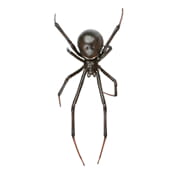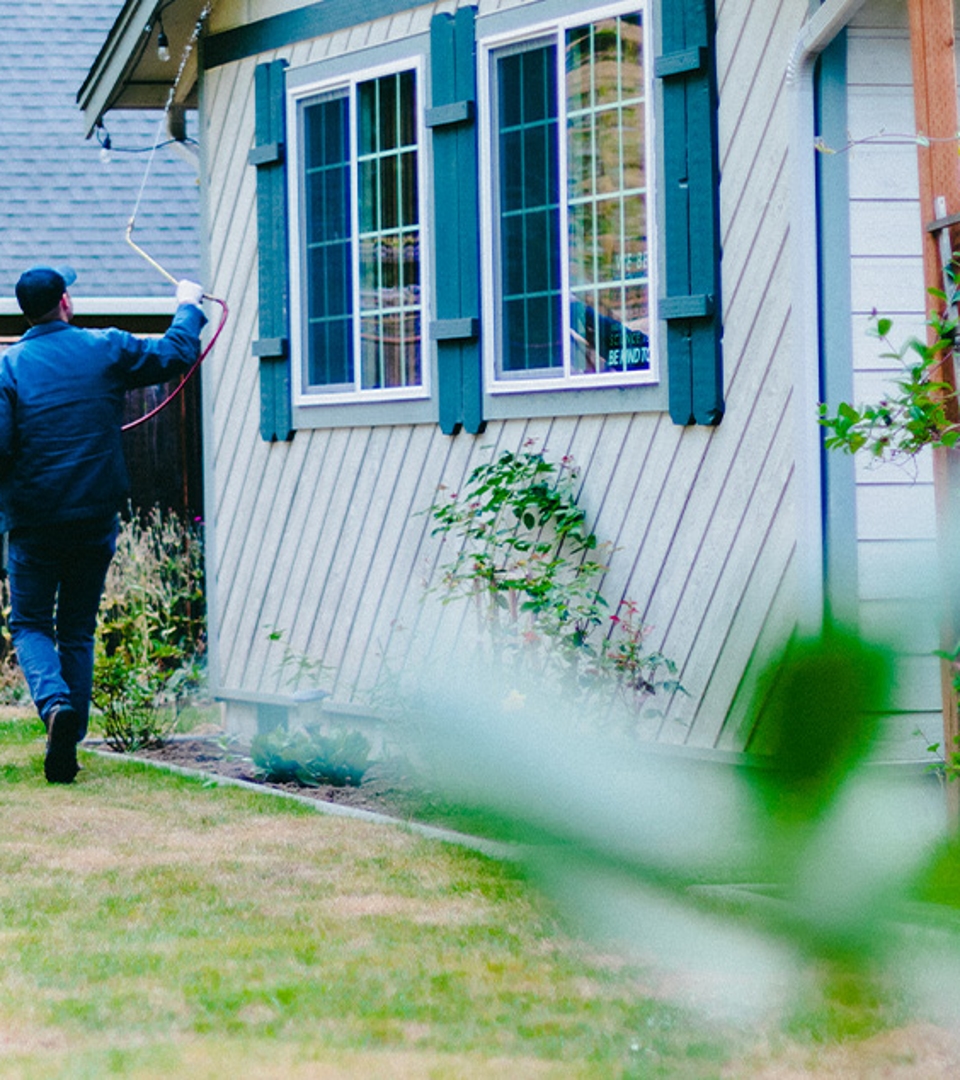
Black Widow Spider Identification

The Western black widow spider (Latrodectus hesperus) or Western widow, is a highly venomous spider species found in western regions of the United States of America. The female’s body is 14-16mm in length and is black, often with an hourglass-shaped red mark on the lower abdomen. The male of the species is around half this size and generally a tan color with lighter striping on the abdomen. The species, as with others of the genus, build irregular webs, the strands of which are very strong.
Habitat
Few areas of Western Washington contain populations of black widow spiders. Some can be found in Island and Skagit Counties, however, you would need to go beyond the cascade mountain range to the far eastern portions of the state to find any sizable populations. Chuck Sullivan has been inspecting and servicing 1000’s of homes and businesses for over 34 years and has never found a Black Widow Spider is this service area. They are easily distinguishable from other similar spiders by locating the ‘hourglass’ on its body, but visitors to this site may be interested to know more about them. In common with other members of the Theridiidae family, the widow spiders construct a cobweb, (i.e., an irregular tangle of sticky silken fibers). The black widow spider very frequently hangs upside down near the center of its web and waits there for insects to blunder in and get stuck. Then, before the insect can extricate itself, the spider rushes over to bite it and swathe it in a silken shroud. If the spider feels threatened it will normally let itself down to the ground on a safety line of silk just as fast as it can. As with other web-weavers, these spiders have very poor eyesight and depend mostly on vibrations reaching them through their webs to orient themselves to prey or warn them of larger animals that could injure or kill them. They are not aggressive, and most injuries to humans are due to defensive bites delivered when a spider gets unintentionally squeezed or pinched somehow. It is possible that some bites may result when a spider mistakes a finger thrust into its web for its normal prey, or in cases where a female is protecting an egg sac, but ordinarily, intrusion by any large creature will cause these spiders to flee.

Hear From Our Happy Customers
-
"Exceptional Service at a Reasonable Price"My rodent problem is resolved and I encourage others to use PestStop as this company provides exceptional service at a reasonable price.- Eddie M.
-
"Explained the Process Clearly and Eased Our Concerns"Have had an annual contract with this company for over a decade. Our house stays pest and critter free but when an issue does arise, they are quick to address it.- Mike S.
-
"Continues to Deliver Excellent Service"I found a mouse in my garage, first time in 5 years, they came right out and set up bait stations and also did an insect inspection and spray. I cannot recommend them enough.- Jeanie L.
-
"He explained the process clearly and eased our concerns."Our house stays pest and critter free but when an issue does arise, they are quick to address it.- Mike S.
-
"Kind And Courteous"Jason, our technician, is always very kind and courteous. He is very knowledgeable and answers all my questions easily.- Bj P.
-
"Professional and Friendly"They always show up on time.- Denise W.
-
"Peststop Is a Great Company"Julie in the office is always so helpful and kind.- Leslie C.
-
"Responsive Professional"What they do for us works!- JoAnne B.

